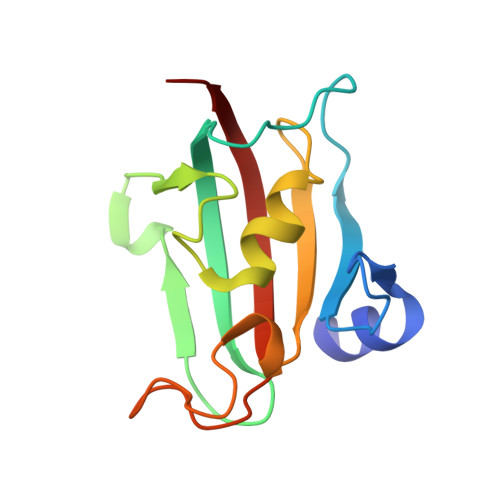Structure-Based Discovery of a New Selectivity-Enabling Motif for the FK506-Binding Protein 51.
Knaup, F.H., Meyners, C., Sugiarto, W.O., Wedel, S., Springer, M., Walz, C., Geiger, T.M., Schmidt, M., Sisignano, M., Hausch, F.(2023) J Med Chem 66: 5965-5980
- PubMed: 37058391
- DOI: https://doi.org/10.1021/acs.jmedchem.3c00249
- Primary Citation of Related Structures:
8CCA, 8CCB, 8CCC, 8CCD, 8CCE, 8CCF, 8CCG, 8CCH - PubMed Abstract:
In recent years, the selective inhibition of FKBP51 has emerged as a possible treatment for chronic pain, obesity-induced diabetes, or depression. All currently known advanced FKBP51-selective inhibitors, including the widely used SAFit2, contain a cyclohexyl residue as a key motif for enabling selectivity over the closest homologue and anti-target FKBP52. During a structure-based SAR exploration, we surprisingly discovered thiophenes as highly efficient cyclohexyl replacement moieties that retain the strong selectivity of SAFit-type inhibitors for FKBP51 over FKBP52. Cocrystal structures revealed that the thiophene-containing moieties enable selectivity by stabilizing a flipped-out conformation of Phe 67 of FKBP51. Our best compound, 19b , potently binds to FKBP51 biochemically as well as in mammalian cells, desensitize TRPV1 in primary sensory neurons, and has an acceptable PK profile in mice, suggesting its use as a novel tool compound for studying FKBP51 in animal models of neuropathic pain.
- Department of Chemistry and Biochemistry Clemens-Schöpf-Institute, Technical University Darmstadt, Alarich-Weiss Straße 4, 64287 Darmstadt, Germany.
Organizational Affiliation:

















